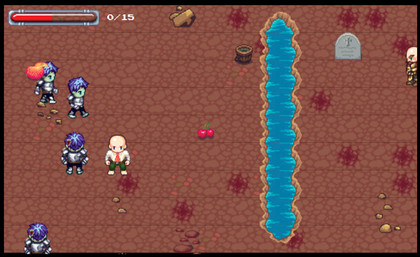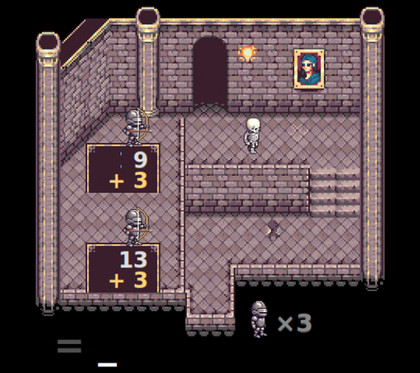How the Liberated Pixel Cup changed gaming on Linux
Inside the competition for the best free Linux games
So the LPC settled on 2D pixel-art graphics from a top-down view, but with a bit of perspective (60 degrees), so that you can see the front of objects. Games will be built from 32x32 pixel tile sets, with an option of smaller 16x16 sub-tiles where necessary.
Lighting should come from above, and possibly slightly to the left, so that everything doesn't look too symmetrical and samey. For characters, the dimensions should be 48x64 pixels.
This might all seem extremely specific, and force developers into producing top-down Zelda or Final Fantasy-like RPGs, but the LPC rules don't limit developers to one particular genre - they're free-to-code, side-scrolling shoot-em ups; turn-based strategy games; or anything else that takes their fancy.
For those interested in the RPG genre, however, there's a set of base tiles and 'naked' characters (see the screenshot) to act as a starting point. This makes it easier for new artists to adopt colour palettes and visual styles. You can find the style guide, base tiles and a simple HTML5 demo of a point-and-click game here.
It's just a phase
With everything in place, the contest kicked off on 1 June with phase one: artwork. This ran until the end of the month, with artists uploading their work to the OpenGameArt website.
A total of 31 artists contributed to the competition, and you can find their work at http://opengameart.org/lpc-art-entries - as you can see, it's a mixed bag of static tiles, animated tiles, characters and collectable items.
Phase two kicked off on 1 July, again running for a month, and focused on coding. An important requirement for the code submissions was that they should run on completely free software (ie, a GNU/Linux system that has no proprietary bits installed). All of the free content and code in the world wouldn't mean much if the end result could only run on Windows…
Get daily insight, inspiration and deals in your inbox
Sign up for breaking news, reviews, opinion, top tech deals, and more.
At the start of August, the judging process began. Kelsey and Webber led the panel, asking them to rate the submissions based on their overall quality and adherence to the style guide. Unfortunately, due to various complications (see the interview over the page), the judging progress has been running rather slowly, and at the time of writing only the art submissions have been rated.
The top winner, who created an attractive set of farm-based tiles (fancy writing an open source version of Harvest Moon?), scooped up a $1,500 prize. By the time you read this, the code judging phase may be complete.
Our pick of the best
You can find the full list of code submissions for the Liberated Pixel Cup at http://opengameart.org/lpc-code-entries - there are 48 to try out, and most of them can be played from inside a web browser, so you don't need to fiddle around with compiling stuff and grabbing dependencies.
Due to the one-month coding-time limitation, obviously none of these games are vast Zelda-like adventures, but they are lots of fun nonetheless. Here, we've selected some of our personal favourites…
Volley Zombie

Volleyball meets zombie attacks in this bizarre shoot-em-up. You're challenged to play the sport, using the WASD key group to move your player around, and Space to jump up and knock the ball back with your head. But while this is going on, hoards of monsters approach you from all angles, so you have to shoot them using the arrow keys. If the monsters touch you, your health bar depletes. This game works especially well with two players sharing the keyboard: one focuses on the volleyball, and the other on wasting zombies.
Castle Defense

You might be expecting something action-filled from the title, but Castle Defense is all about using your brain. Essentially, it's a maths-based game, whereby skeletons are trying to break through your castle's towers, and you have some archers at your disposal. By solving the maths questions that appear (just type in the answers), your archers fire arrows horizontally along the screen; you start off with two archers responding to addition exercises, and on the next level there are three with subtraction questions, and so forth. The music is great, too.